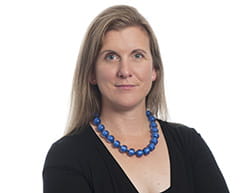This week, the Government published the The Building Safety Levy consultation on the technical details and implementation of the Building Safety Levy (the Levy), which will apply to new residential buildings requiring building control approval in England.
The Building Safety Levy consultation (the Consultation) was published on 22 November 2022 and will run until 7 February 2023. Once the Consultation has closed, full details of how the Levy will work will be set out in secondary legislation.
The Government expects the Levy to raise an estimated £3 billion and will contribute towards the remediation of buildings over 11m in height. This is in addition to the agreement between the Government and major housebuilders who have pledged to commit £2 billion to fix their own buildings.
What will the Building Safety Levy apply to?
The Consultation seeks views on the design and implementation of the Levy. Under section 58 of the Act, the Secretary of State has broad powers to raise a levy on any relevant building which is defined in the Act as a building in England consisting of or containing:
- one or more dwellings, or
- other accommodation, (and “accommodation” here includes temporary accommodation for example in a hotel or hospital).
The Levy will be paid by developers and charged on new residential buildings requiring building control approval in England, for the purpose of meeting building safety expenditure. The Government had originally intended for the Levy to apply only to certain high rise residential buildings, but announced in February 2022 that it would expand the scope to all new residential buildings requiring building control approval.
The ‘Client’ (i.e. the person or organisation for whom a construction project is carried out) will be responsible for payment of the Levy.
What is the Building Safety Levy consultation seeking views on?
The Consultation seeks views on a number of areas, including:
- Exemptions: the Government proposes to exclude certain buildings from the Levy, including affordable homes, NHS hospitals, NHS medical centres, NHS GP centres, residential care homes and children’s homes, refuges and residential domestic abuse facilities, criminal justice accommodation, military barracks and other military establishments. The Government also suggests excluding small developments (under 10 units) and seeks views on whether a development which includes a specified proportion of affordable housing could benefit from a significantly discounted Levy rate (in addition to the exemption for affordable housing).
- Levy calculation: the Consultation does not set out possible Levy rates but seeks views on whether the Levy should be applied on a ‘per unit’ basis or a ‘per square metre’ basis. The Government also suggests setting geographic differential rates to reflect land value and house prices, based either on local authority boundaries (which is the Government's preferred option) or on a regional basis. In addition, the Government is considering setting a differential Levy rate based on whether the site is brownfield/greenfield.
- Delivery and collection: the Government suggests that local authorities will be the collection agency for the levy and the intention is to allow local authorities to retain a proportion of levy receipts to pay for the additional administrative burden. The Government anticipates there will be an element of self-assessment by the client (to be reviewed by the collection agency) and the Levy will be paid in two instalments (60% at the “notice to commence” stage and then 40% prior to final certification stage).
- Sanctions: the Consultation suggests that a development will not be able to progress if the Levy hasn’t been paid at the relevant stages, either through the local authority issuing a stop notice or withholding final certification. In addition, the Government is considering a range of approaches to sanctions beyond the withholding of building control approval, including the use of fines.
- Review: the Government suggests the Levy rate and design is reviewed every 3 years.
You can view the Consultation and send your response The Building Safety Levy consultation.
